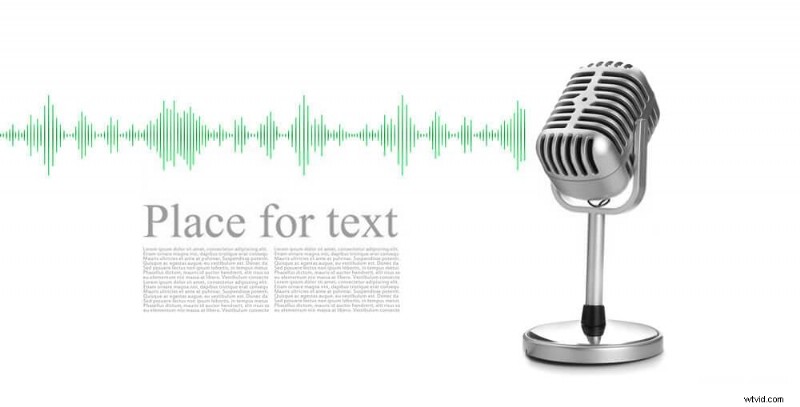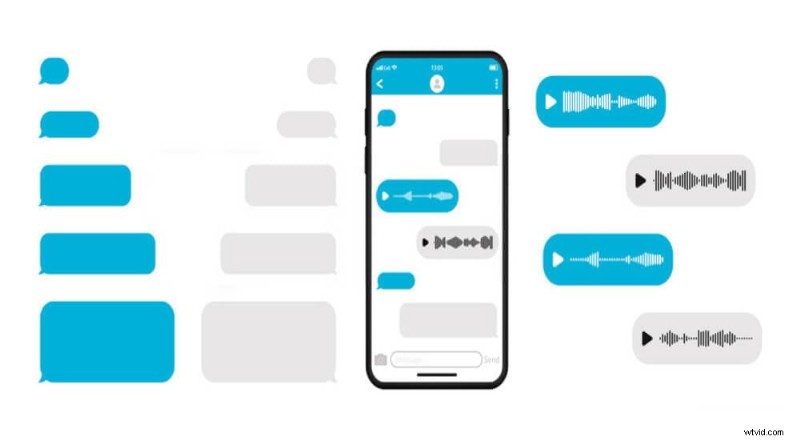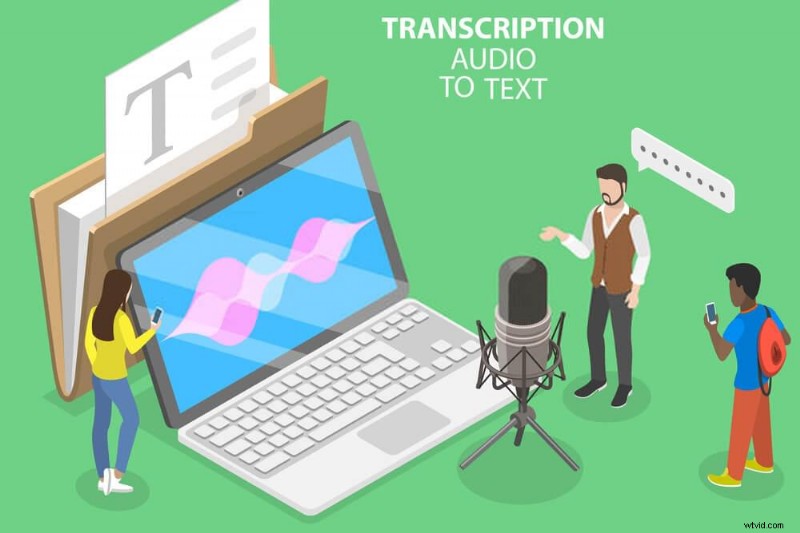¿Alguna vez se ha preguntado cómo los teléfonos inteligentes reciben información como "Llamar a papá", "Enviar texto al jefe", "Reproducir canciones de Taylor Swift", "Encender el inversor", entonces no está solo? Pero, ¿cómo es posible? La única respuesta desafiante es el reconocimiento de voz. El reconocimiento de voz vio su auge en las últimas décadas, pero la pandemia lo hizo tocar nuevas alturas.
Si retrocedemos un poco a 1962, IBM lo introdujo por primera vez al presentar la primera máquina capaz de reconocer la voz humana y convertirla en texto. Hoy, el poder mutuo de la inteligencia artificial, el aprendizaje automático y el aprendizaje profundo, el reconocimiento de voz está alcanzando nuevos hitos.
Con la tecnología expuesta, compañías globales como Alexa, Amazon, Apple, Siri, Google Speech, Google Assistant, Oculus VR y Cortana son los principales ejemplos de reconocimiento de voz. Con la tecnología de voz a texto en constante crecimiento, se abren nuevas oportunidades comerciales y laborales.
¿Qué es el reconocimiento de voz?
El reconocimiento de voz es una actividad de comprensión inteligente de la voz de un usuario y su transformación en texto. Es principalmente de 3 tipos:
- Reconocimiento automático de voz (ASR)
- Reconocimiento de voz por computadora (CSR)
- Voz a texto (STT)
Conclusiones clave: El reconocimiento de voz y el reconocimiento de voz son dos cosas separadas. El reconocimiento de voz es lo que convierte el habla en texto, mientras que el reconocimiento de voz es para reconocer la voz e identificar a quién pertenece. El reconocimiento de voz se utiliza principalmente con fines de seguridad y verificación.
¿Cómo han afectado la IA y el ML al futuro del reconocimiento de voz?
AI y ML dieron lugar al uso del reconocimiento de voz. Por lo tanto, el reconocimiento de voz se usa para activar dispositivos, ejecutar consultas, monitorear dispositivos con objetivos de actividad física, reproducir canciones, enviar mensajes y realizar llamadas. El uso del reconocimiento de voz está creciendo un 17,2 % a la tasa de crecimiento anual acumulativa y se espera que alcance un valor de 26 800 millones para 2025 en el mercado mundial.
Si bien inicialmente, el reconocimiento de voz enfrentó algunos de los mayores desafíos, como dispositivos de grabación de voz deficientes, ruidos interrumpidos y tonos irregulares, etc. Otro factor desafiante como los errores gramaticales como el reconocimiento de homónimos.
La inteligencia artificial desempeñó un papel importante en la cancelación del ruido, el filtrado de sonidos y la comprensión del significado de las palabras según el contexto de fondo. Therefore, today, speech recognition is able to achieve 95% efficiency, which is 30% more than it was 30 years back. Moving along with the pace of ever-growing technology, another bigger challenge that is yet to be resolved is the capability of understanding feelings, emotions and making significant progress on this part.
Almost every businessman who wants to digitize their business is looking forward to leveraging the benefits of speech recognition. The increased popularity of speech recognition in the business world.
The more advanced features of speech recognition are becoming a driving factor of leveraging benefits for businesses. Back in 2016, more than 20% of users used to search on Google through the voice assistant, and it’s been growing ever since. Therefore businesses and tech giants are automating their operations and services to upscale their businesses capabilities.
Some of the essential voice recognition uses of today are listed below.
- One of the most basic use of voice recognition is to perform basic functions such as giving commands on Google, scheduling, reminders, alarms, meetings, playing songs, controlling synched devices, etc.
- Speech recognition is now used to automate finance servicing. Financial departments use speech recognition to make transactions via using the feature of “Voice Transfer.”
- Translations into different languages have become much frictionless with the help of speech-to-text software.
- If you are a music listener and often find it challenging to discover the song you don’t remember-speech recognition has something meaningful. There are speech-recognizing websites that help you find out songs by simply humming the song’s lyrics.
- Speech recognition helps with transcribing videos and audio files.
- It’s a great help in planning, navigation, tracking through GPS.
Perks of voice recognition technology
Let’s look into the perks and boons of voice recognition technology helping millennials and discover how these benefits can transform businesses.
‘Everything is about personalization’
Do you know what is the biggest ever mystery of the business world? From large enterprises to small firms, all are chasing after its answer. The big unknown is “what our customer wants and what we need to do to deliver it?”
Voice recognition is helping businesses remove the communication gap and know more about their customers’ desires. Voice assistant software is bringing your customers closer to your services. It can give your business an extra glam by adding a more personalized touch to your services. Now you can easily and quickly answer their needs.
More customized conversations can be created with Voice AI, which can offer a better connection between the business and the customers.
Talking is faster than typing!
When it comes to making your work life more manageable, speech software comes in handy. These tools offer more efficient voice inputs than typing.
When AI is fueling voice recognition, it is improving day by day. The University of Stanford has been enhanced to the degree where it can be much speedier and more reliable than text outputs. It has helped businesses streamline their operations, processes and uplifted the burden of typing and other related tasks while allowing employees to focus on more meaningful aspects of their jobs.

When it comes to task management duties such as setting up call conferences, meetings, and reminders on Alexa—speech recognition is great support. The more improved managerial tasks, the more streamlined processes become to uplift productivity and efficiency.
The business world demands more efficiency and speedy delivery. People want to see end results delivered out to them in less time. The advanced speech recognition technology is ensuring the world that it can deliver tasks more efficiently and with more speed. You will see the difference between how speech recognition takes less time to acquire relevant information than if you do it manually.
Not only that, if you are dealing with different languages, you can rely on speech recognition to translate different languages instantly. AI-powered speech recognition software is growing smarter day by day as they learn to understand different accents, dialects, and low and high pitches of words. In short, AI is boosting up the accuracy and efficiency of speech recognition to 99%. With the language barriers removed, it’s a great help to achieve your business targets more quickly.
When it comes to accessibility, it is much easier for people with disabilities to communicate better and much easier. Accessibility of information to everyone has become the legal right of every habitant of the planet earth. Therefore, technology is growing its powers to empower people with disabilities or limitations to do their work like everyone else.
Moreover, speech recognition helps people with arthritis, hand tremors, or people who face difficulty in typing.

With Voice AI, it has become possible to reach multiple customers at once, unlike customer support, where you can reach out and resolve the queries of one person at a time.
Now, we are sure that speech technology can improve the capabilities of business operations by increasing the number of customers and dealing with their queries more efficiently.
During the pandemic, AI-powered speech recognition tools did wonders for businesses to reach out to their customers and help them resolve their issues. With more customized AI audio assistants, the enterprises were able to pull off great deals, increasing their revenues.
With the growing popularity of speech recognition, more and more businesses are prone to invest their resources to integrate their operations with speech recognition technology.
In the coming years, more and more business operations will be depending on speech technology.
Task performance gets better when it involves less of hands’ job and more of the automation help of speech recognition tools.
Setting up meetings, reminders, and sending out messages to customers, manually is quite laborious and can engulf the most productive part of your day.
The less occupied your employees on less productive tasks, the more efficient they will perform the more productive tasks.
How can you convert speech into text by using text-to-speech software?
Automation text conversion software is the best solution for content creators, educational organizations, the healthcare sector, and every other business to get high-quality translated text files in a matter of minutes.
An automated speech recognition tool like SubtitleBee picks intelligently all aspects of spoken words, intonations, speech algorithms, low and high pitch to create a perfect video to text converter.

SubtitleBee is an enterprise’s choice as it translates and transcribes videos into 100+ different languages. By just tapping over the language of your choice, you can get your files translated in a few minutes. It can cost you a higher amount if you use an outsourcing tool.
SubtitleBee can save you up to 3X- cheaper than any outsourcing tool. Furthermore, the spell check and QA assistance assure your text is error-free. In addition, SubtitleBee has is user-friendly for subtitling, transcribing, and translating your videos.
Closing thoughts
Speech Recognition is one of the best innovations made by expanding technological developments. There is no doubt; speech recognition technology has won the hearts of millions by its wondrous innovations and expansions to almost all fields.
